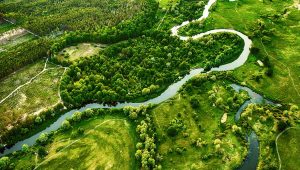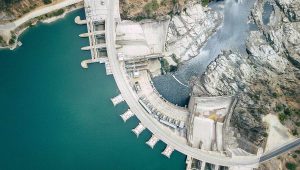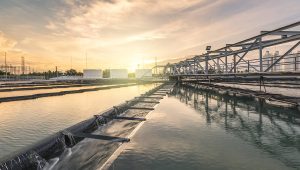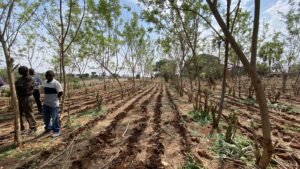Why are integrated approaches critical for water smart climate mitigation? 3 questions to Anna Tengberg and Thérèse Rudebeck
Integrated approaches address the interconnections between water and climate change mitigation. At a webinar on 12 April Anna Tengberg, from SIWI, and Thérèse Rudebeck, from WaterAid, explain the importance of breaking the silos and offer concrete examples on how to recognize the systemic and connected nature of climate and water. We asked them why integrated approaches are key to climate mitigation.
Why is it critical to have integrated approaches when talking about climate mitigation?
Mitigating climate change requires the collaboration between different sectors and stakeholder groups. Traditionally, siloed approaches fail to recognize the systemic and connected nature of climate and water. To achieve water smart climate mitigation it is essential to assess synergies and address risks from a holistic perspective.
For example, mitigation through landscape restoration requires collaboration among the forestry, the agriculture and the water sectors: Trees can sequester carbon, but they require water to do so. By improving tree and forest coverage in the right places, in a specific catchment or landscape, we can increase water infiltration and moisture in the soil, recharge groundwater, which in turn, will lead to more secure water flows downstream.
“To achieve water smart climate mitigation it is essential to assess synergies and address risks from a holistic perspective.”
Integrated approaches adopt such holistic systems thinking and can therefore capitalize on the connected nature of climate and water.
Why should people watch the webinar?
The report “The essential drop to Net-Zero: Unpacking freshwater’s role in climate change mitigation” presents a scientifically robust case for water-wise climate mitigation. Chapter 9 specifically, covered in this webinar, provides a guide for how to achieve this in practice.
Listening to this webinar will give an overview of different integrated approaches that can be adopted, such as Integrated water resources management (IWRM), the landscape approach, and source-to-sea (S2S). It will give concrete examples of how these solutions work in practice and how they can be implemented.
We also discuss challenges with integrated approaches as well as trade-offs that need to be considered between different ecosystem services, flows and sectors.
“Integrated approaches adopt a holistic systems thinking and can therefore capitalize on the connected nature of climate and water.”
What should people do afterwards? What is your call to action?
The call to action would be threefold:
- Firstly, to recognize that systems-thinking is key to address the interconnections between water and climate change mitigation. Integrated approaches is the practical way forward here to capitalize on the synergies and reduce trade-offs.
- Secondly, to acknowledge that different approaches will be suitable depending on the context. But all need to be participatory and build trust and negotiate solutions between different groups of stakeholders and sectors.
- Finally, that governance systems need to be strengthened across sectors and levels to deliver water-smart climate mitigation through integrated approaches.
Practically, this means to think outside of the box: If you are a planner, practitioner or scientist, see how you can work in a more holistic way. Reach out to other sectors, disciplines and stakeholders that you do not normally collaborate with, but who are also part of the solution.

















